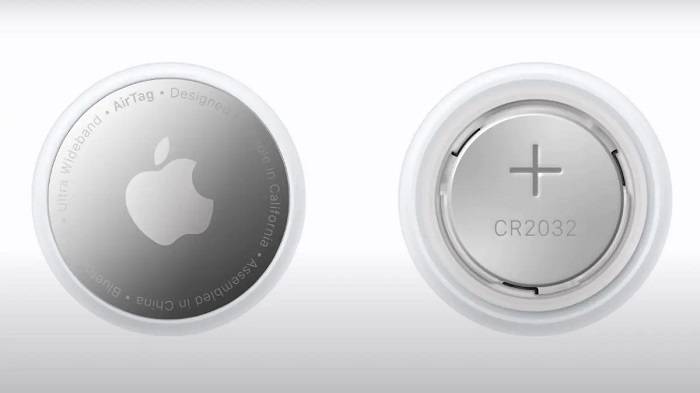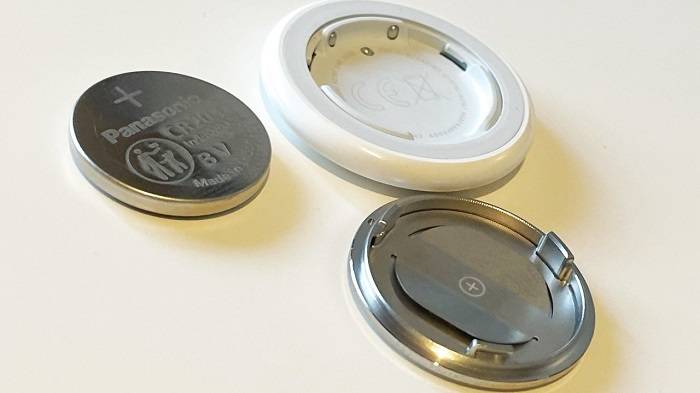In the world of smart devices, the Apple AirTag has emerged as a revolutionary tool for effortlessly keeping track of our most precious possessions. From keys to backpacks, and even pets, AirTags have changed the game when it comes to finding lost items. However, like all devices, they require power to function, and that’s where the topic of AirTag batteries comes into play. This comprehensive guide will delve into everything you need to know about AirTag battery life, how to replace them, and tips to maximize their longevity.
Understanding AirTag and Its Battery

Launched by Apple, the AirTag is a small, coin-shaped device designed to help users locate their belongings. It utilizes Bluetooth technology to communicate with your Apple devices, allowing you to see the location of the tagged item on a map within the Find My app. The simplicity and effectiveness of AirTags have made them incredibly popular since their release.
At the heart of each AirTag is a CR2032 lithium 3V coin battery. This choice of battery is notable for several reasons. Firstly, the CR2032 is widely available and relatively inexpensive, making replacements easy and accessible. Secondly, it’s user-replaceable, meaning you won’t need to visit an Apple Store or authorized service provider to change the battery. Apple promises a battery life of “over a year” under typical daily use, which is impressive for such a small device. However, actual battery life can vary based on several factors, including how often the AirTag is used to locate items and the environment in which it operates.
When to Replace Your AirTag Battery
Knowing when to replace your AirTag battery is crucial for ensuring that your items remain trackable. The AirTag is designed to notify you when its battery is running low through a message on your connected Apple device. You’ll receive this alert well before the battery is completely drained, giving you ample time to replace it.
Additionally, you can check the battery status manually at any time in the Find My app. Simply open the app, choose the Items tab, and select your AirTag. The battery level will be displayed under the AirTag’s name.
Step-by-Step Guide to Replacing Your AirTag Battery
Replacing the battery of an AirTag is a straightforward process that requires no special tools. Follow these steps to ensure a smooth replacement:
- Prepare the AirTag: Place the AirTag face down on a soft, clean surface to avoid scratching it.
- Open the AirTag: Press down on the stainless steel battery cover of the AirTag and rotate counterclockwise until the cover can be removed. It’s similar to opening a child-proof medicine bottle.
- Remove the Old Battery: Take out the spent CR2032 battery. No tools are needed for this step.
- Insert the New Battery: Place the new CR2032 battery into the AirTag with the positive side facing up. You should hear a sound indicating that the AirTag is working and the battery is correctly installed.
- Close the AirTag: Align the three tabs on the cover with the three slots on the AirTag. Press the cover down and rotate clockwise until it locks into place.
After replacing the battery, it’s a good idea to test the AirTag by using the Find My app to ensure it’s working correctly.
Maximizing Your AirTag’s Battery Life
While the AirTag is designed to be energy-efficient, there are several practices you can adopt to help extend its battery life:
- Use Smartly: Frequent checking of your AirTag’s location can drain the battery faster. Use the tracking function judiciously.
- Optimal Conditions: Extreme temperatures, both hot and cold, can affect battery performance. Try to keep your AirTag in environments with moderate temperatures.
- Firmware Updates: Apple periodically releases firmware updates for the AirTag that can improve its efficiency and potentially extend battery life. These updates are applied automatically when the AirTag is in range of your iPhone.
Advanced Tips for Using AirTags
While replacing the battery is straightforward, getting the most out of your AirTag involves a bit more insight. Here are some advanced tips:
Precision Finding: For iPhone 11 and later users, the AirTag offers Precision Finding, which uses Ultra-Wideband technology for more accurate directions to your AirTag. This feature can be more power-intensive, so use it judiciously if you’re looking to conserve battery life.
Custom Notifications: Dive into the settings within the Find My app to customize notifications and alerts for your AirTag. Tailoring these settings can help reduce unnecessary location checks and save battery life.
Automate with Shortcuts: Use the Shortcuts app to automate certain actions when an AirTag is found or lost. While this doesn’t directly affect battery life, it can make the use of your AirTag more efficient.
Environmental and Security Considerations
The AirTag’s reliance on CR2032 batteries also raises environmental considerations. These batteries, while common and relatively safe, contain materials that can be harmful if not disposed of properly. Recycling used batteries at designated collection points can mitigate some of these environmental impacts.
Moreover, the security implications of AirTags and similar tracking devices have been a point of discussion since their release. Apple has implemented features to prevent unwanted tracking, such as alerting iPhone users if an unknown AirTag is moving with them over time. Users must be mindful of these features and adhere to ethical guidelines when deploying AirTags, ensuring they’re used to track personal items and not individuals without their consent.
The Future of AirTag and Personal Tracking Technology
Looking ahead, the evolution of personal tracking technology, exemplified by devices like the AirTag, hints at a future where losing items could become increasingly rare. Innovations could lead to even smaller devices with longer battery lives, perhaps even leveraging energy-harvesting technologies to eliminate the need for battery replacements altogether.
Additionally, as augmented reality (AR) technologies mature, we may see integrations between items like AirTags and AR glasses or apps, offering a visually intuitive way to find lost items by overlaying digital indicators onto our real-world view.
Related Post:
Deciphering the “LG TV This App Will Now Restart” Glitch: A Troubleshooting Guide
Finding the Reset Button on Your Hisense TV: A Complete Guide
Navigating the Enigma of the Onn Roku TV Black Screen: Causes, Solutions, and Prevention
The Apple AirTag has brought convenience and peace of mind to many by safeguarding our valuables. Understanding how to maintain and replace the AirTag’s battery ensures this tiny device can continue to serve its purpose effectively. By following the tips and instructions provided in this guide, you can enjoy uninterrupted use of your AirTags, keeping your belongings safe and sound for years to come.
With a straightforward battery replacement process and strategies to maximize battery life, your AirTag can remain a reliable and low-maintenance companion. Whether you’re tracking everyday items or ensuring the safety of more significant possessions, the AirTag, powered by its simple yet effective battery, stands as a testament to the innovation and practicality of modern technology.
The Apple AirTag is more than just a tracker; it’s a gateway into a future where technology seamlessly integrates into our daily lives to solve common problems. By understanding how to maintain and efficiently use AirTags, including battery replacement and optimization, users can fully leverage this technology’s benefits. As we look forward to advancements in this field, the principles of mindful usage, environmental responsibility, and ethical considerations will continue to guide the development and adoption of personal tracking technologies, ensuring they enhance our lives while safeguarding our values and our planet.


